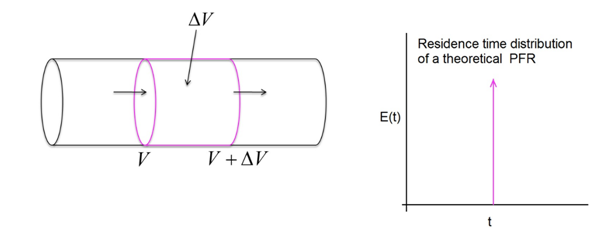The plug flow reactor model (PFR, sometimes called continuous tubular reactor, CTR) is normally the name given to a model used in chemical engineering to describe chemical reactions in continuous, flowing systems of cylindrical geometry. The PFR model is used to predict the behaviour of chemical reactors of tubular design, so that key reactor variables, such as the dimensions of the reactor, can be estimated.
Fluid going through a plug flow reactor is modeled as flowing through the reactor as a series of infinitely thin coherent “plugs”, each having a uniform composition. The plugs travel in the axial direction of the reactor, with each plug having a different composition from the ones before and after it. The key assumption is that as a plug flows through a PFR, the fluid is perfectly mixed in the radial direction but not mixed at all in the axial direction (not with the element upstream or downstream). Each plug is considered as a separate entity, effectively an infinitesimally small batch reactor with mixing approaching zero volume. As the plug flows down the PFR, the residence time of the plug element is derived from its position in the reactor. In this description of the ideal plug flow reactor, the residence time distribution is therefore an Impulse (a small narrow spike function).
Although it is a powerful tool for estimating purposes, care should be exercised as real flow system exhibit significant variability in residence times. Residence time distribution is one of the factors that needs to be considered when scaling flow reactors.

